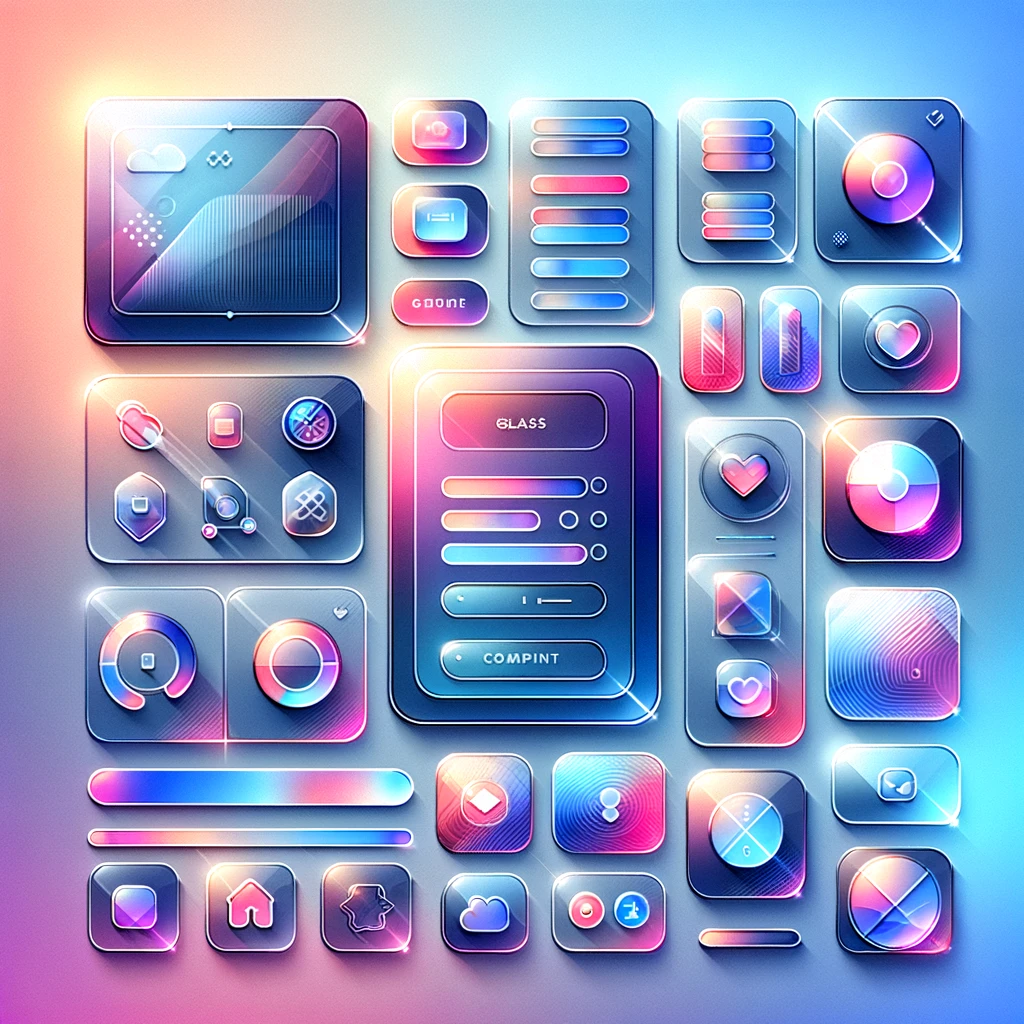UIBUtton in UIKit
UIButton is a widely used component in the UIKit framework, providing an interactive element that allows users to trigger actions within your iOS applications. In this article, we will explore what UIButtons are.

Understanding UIButtons in UIKit
UIButton is a widely used component in the UIKit framework, providing an interactive element that allows users to trigger actions within your iOS applications. In this article, we will explore what UIButtons are, the various functionalities they offer, and provide practical code examples to demonstrate how you can implement and customize them in your iOS projects.
What is a UIButton?
A UIButton is a subclass of UIControl that allows users to interact with your app by tapping or clicking it. Buttons can display text, images, or a combination of both. They are commonly used for actions such as submitting forms, navigating between screens, or performing specific tasks when tapped.
What Can You Do with UIButtons?
UIButtons offer a variety of customization options and functionalities. Here are some key things you can do with UIButtons:
- Set Titles: Display text on the button using the setTitle method.
- Adjust Font: Customize the font style, size, and weight using the titleLabel.font property.
- Text Color: Change the color of the button's title using the setTitleColor method.
- Background Image: Set a background image for different button states using the setBackgroundImage method.
- Handle Actions: Add target-action pairs to handle button taps using the addTarget method.
- Styling: Customize the button's appearance using properties such as cornerRadius, borderColor, and borderWidth.
Implementing UIButtons in Swift
Let's dive into some code examples to see how you can create, customize, and work with UIButtons in Swift.
Creating a Simple UIButton
To create a simple UIButton, you can initialize it with a frame and add it to a view controller's view. Here is an example:
import UIKit
class ViewController: UIViewController {
override func viewDidLoad() {
super.viewDidLoad()
// Create a UIButton with a frame
let myButton = UIButton(frame: CGRect(x: 50, y: 100, width: 200, height: 50))
myButton.setTitle("Tap Me", for: .normal)
myButton.setTitleColor(.white, for: .normal)
myButton.backgroundColor = .blue
// Add the UIButton to the view controller's view
self.view.addSubview(myButton)
}
}
In this example, we create a UIButton with a specified frame and set its title, title color, and background color properties. The button is then added to the view controller's view hierarchy.
Customizing a UIButton
You can customize UIButtons by setting various properties, such as font, background image, and corner radius. Here is an example:
import UIKit
class ViewController: UIViewController {
override func viewDidLoad() {
super.viewDidLoad()
// Create a UIButton
let myButton = UIButton()
myButton.translatesAutoresizingMaskIntoConstraints = false
myButton.setTitle("Press Me", for: .normal)
myButton.setTitleColor(.white, for: .normal)
myButton.backgroundColor = .systemGreen
myButton.titleLabel?.font = UIFont.systemFont(ofSize: 18, weight: .bold)
// Customize the UIButton
myButton.layer.cornerRadius = 10
myButton.layer.borderColor = UIColor.white.cgColor
myButton.layer.borderWidth = 2.0
// Add the UIButton to the view controller's view
self.view.addSubview(myButton)
// Set Auto Layout constraints
NSLayoutConstraint.activate([
myButton.centerXAnchor.constraint(equalTo: self.view.centerXAnchor),
myButton.centerYAnchor.constraint(equalTo: self.view.centerYAnchor),
myButton.widthAnchor.constraint(equalToConstant: 200),
myButton.heightAnchor.constraint(equalToConstant: 50)
])
}
}
In this example, we create a UIButton and customize its title, font, background color, corner radius, border color, and border width. We also use Auto Layout to center the button and set its width and height constraints.
Handling Button Actions
UIButtons can trigger actions when tapped. Here is an example of adding a target-action pair to a UIButton:
import UIKit
class ViewController: UIViewController {
override func viewDidLoad() {
super.viewDidLoad()
// Create a UIButton
let myButton = UIButton()
myButton.translatesAutoresizingMaskIntoConstraints = false
myButton.setTitle("Click Me", for: .normal)
myButton.setTitleColor(.white, for: .normal)
myButton.backgroundColor = .systemRed
myButton.titleLabel?.font = UIFont.systemFont(ofSize: 18, weight: .bold)
// Add target-action pair
myButton.addTarget(self, action: #selector(buttonTapped(_:)), for: .touchUpInside)
// Add the UIButton to the view controller's view
self.view.addSubview(myButton)
// Set Auto Layout constraints
NSLayoutConstraint.activate([
myButton.centerXAnchor.constraint(equalTo: self.view.centerXAnchor),
myButton.centerYAnchor.constraint(equalTo: self.view.centerYAnchor),
myButton.widthAnchor.constraint(equalToConstant: 200),
myButton.heightAnchor.constraint(equalToConstant: 50)
])
}
@objc func buttonTapped(_ sender: UIButton) {
print("Button was tapped!")
}
}
In this example, we add a target-action pair to the UIButton. When the button is tapped, the buttonTapped function is called, and a message is printed to the console.
Using Images in UIButtons
UIButtons can also display images. Here is an example of setting an image for a UIButton:
import UIKit
class ViewController: UIViewController {
override func viewDidLoad() {
super.viewDidLoad()
// Create a UIButton
let myButton = UIButton()
myButton.translatesAutoresizingMaskIntoConstraints = false
myButton.setTitle("Photo", for: .normal)
myButton.setTitleColor(.white, for: .normal)
myButton.backgroundColor = .systemBlue
myButton.titleLabel?.font = UIFont.systemFont(ofSize: 18, weight: .bold)
// Set an image for the UIButton
myButton.setImage(UIImage(systemName: "photo"), for: .normal)
myButton.imageView?.contentMode = .scaleAspectFit
myButton.imageEdgeInsets = UIEdgeInsets(top: 5, left: -10, bottom: 5, right: 10)
// Add the UIButton to the view controller's view
self.view.addSubview(myButton)
// Set Auto Layout constraints
NSLayoutConstraint.activate([
myButton.centerXAnchor.constraint(equalTo: self.view.centerXAnchor),
myButton.centerYAnchor.constraint(equalTo: self.view.centerYAnchor),
myButton.widthAnchor.constraint(equalToConstant: 200),
myButton.heightAnchor.constraint(equalToConstant: 50)
])
}
}
In this example, we create a UIButton and set an image using the setImage method. We also adjust the image's content mode and edge insets to position the image properly within the button.
Conclusion
UIButtons are essential components for creating interactive elements in your iOS applications. In this article, we've covered the basics of what UIButtons are, their various functionalities, and provided practical code examples to help you implement and customize them in your own projects. From setting basic properties to handling actions and using images, mastering UIButtons is crucial for creating responsive and engaging user interfaces.
Understanding and effectively utilizing UIButtons can significantly enhance your app's interactivity and user experience. Experiment with different UIButton properties and styles to create dynamic and appealing buttons in your iOS applications.





